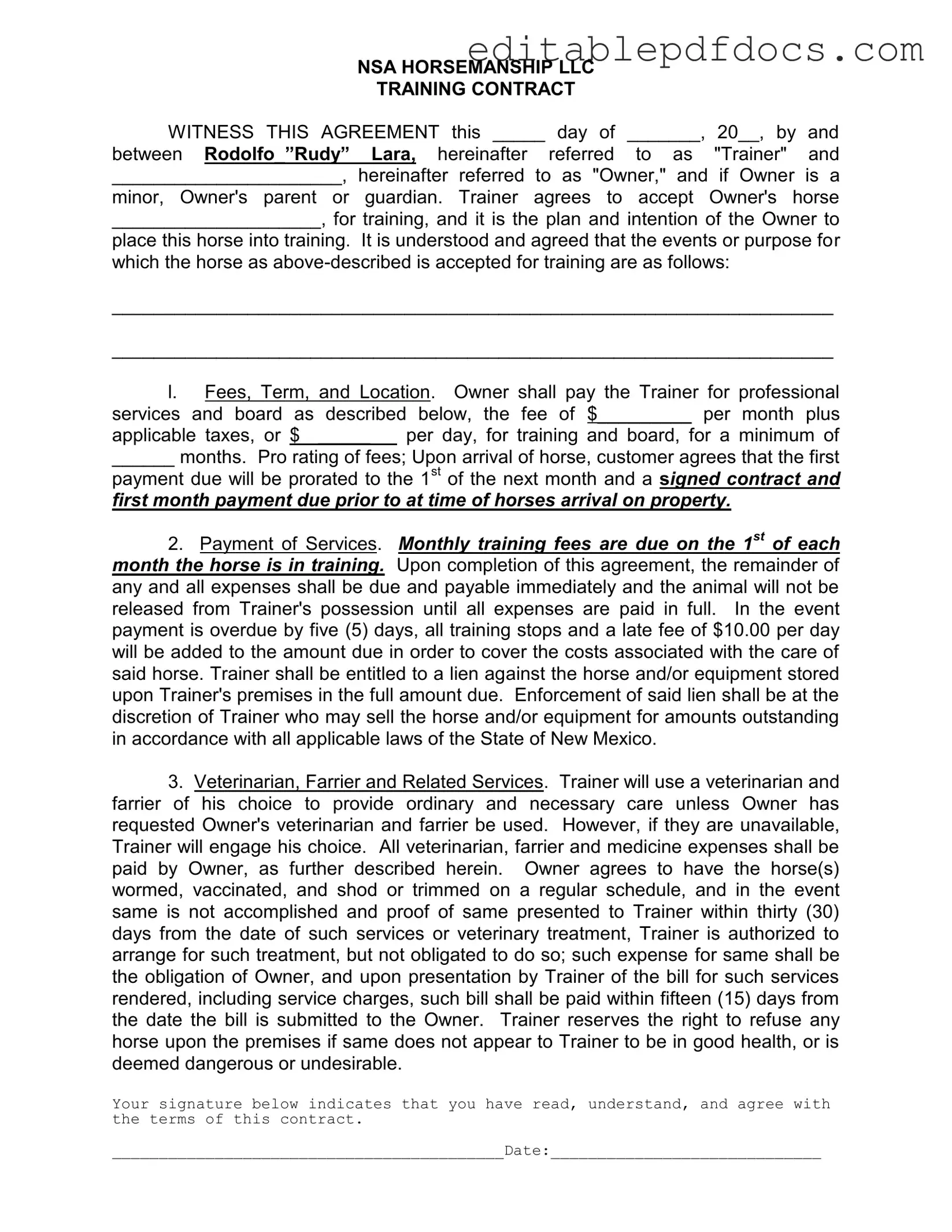Filling out a Horse Training Contract form can be a straightforward process, but several common mistakes can lead to misunderstandings or complications down the line. One frequent error is failing to provide complete and accurate information about the horse. Owners should ensure they fill in the horse's name clearly. Omitting this detail can create confusion about which horse is being referred to in the agreement.
Another common mistake is neglecting to specify the training goals or purposes. The section that asks for the events or purpose for which the horse is accepted for training should not be overlooked. A vague or blank response can lead to misaligned expectations between the Trainer and the Owner, potentially resulting in dissatisfaction with the training process.
Many Owners also forget to clarify the payment terms. It’s essential to fill in the correct fee structure, including whether the payment is monthly or daily, and to specify the duration of the training period. Incomplete payment information can lead to disputes over costs, especially if unexpected fees arise later.
Another area where mistakes are common is in the section regarding veterinary and farrier services. Owners should be diligent in indicating their preferences for care providers. Leaving this section blank might result in the Trainer using their own choices, which may not align with the Owner’s wishes.
Additionally, some Owners overlook the importance of providing emergency contact information. In the event of a veterinary emergency, having this information readily available can be critical for the horse's health. Failing to do so can lead to delays in necessary treatment.
Moreover, many people forget to sign and date the contract. This seemingly minor oversight can render the agreement invalid. Signatures are crucial as they demonstrate that both parties have read, understood, and agreed to the terms outlined in the contract.
Some Owners may also neglect to disclose any hazardous behaviors or propensities of their horses. This omission can put both the horse and Trainer at risk. Being upfront about any known issues is essential for ensuring a safe training environment.
Another mistake is not reviewing the rules and regulations section thoroughly. Owners should be aware of the Trainer’s policies, especially regarding horse pick-up by someone other than the Owner. Not adhering to these rules can lead to complications when retrieving the horse.
Finally, many Owners fail to keep copies of the completed contract. Having a personal copy is vital for reference and ensures that both parties have access to the same information. This can help prevent disputes and misunderstandings in the future.
